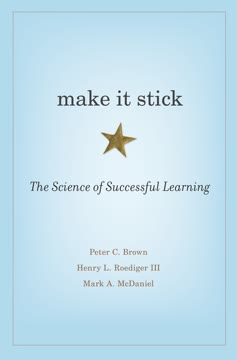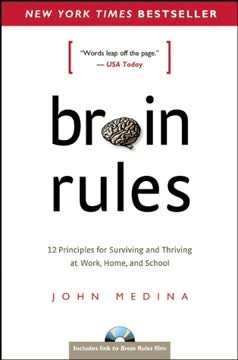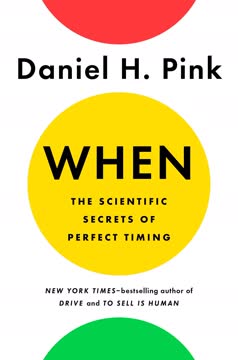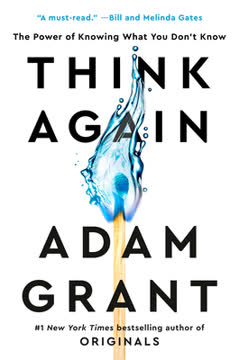Key Takeaways
1. Learning Experience Design (LXD) combines content and context to enable human performance
"To me, learning experience design (LXD) is the combination of content and context to enable human performance—and that's what elevates LXD."
Content alone is insufficient. LXD goes beyond traditional instructional design by focusing not just on what people need to know, but how they will apply that knowledge in their specific work context. This approach considers the entire learning journey, including the environment, learner characteristics, and real-world application.
Engagement is key. LXD incorporates three crucial engagement constructs:
- Behavioral engagement: What learners are doing
- Cognitive engagement: How learners are being challenged
- Emotional engagement: How the experience makes learners feel
By addressing all these aspects, LXD creates more impactful and memorable learning experiences that translate directly to improved job performance.
2. The LXD process encompasses 10 essential steps from request to results
"The crux of the LXD process embraces the content along with the context."
A comprehensive approach. The LXD process consists of 10 interconnected steps:
- The Request
- The Kickoff
- The Scope Agreement
- The Shoes
- The Funnel
- The Product
- The Red Pen
- The Message
- The Takeoff
- The Results
Each step serves a purpose. This process ensures that learning experiences are thoroughly planned, aligned with business goals, and designed with the end-user in mind. From initial stakeholder requests to final evaluation, the LXD process provides a framework for creating effective, context-aware learning solutions that drive measurable results.
3. Task analysis is crucial for creating effective learning experiences
"A thorough task analysis will determine the performance criteria for a task. I'll even go a step further to say that it practically writes your learning objectives for you (and with a stronger performance lens)."
Understanding the job. Task analysis involves breaking down a job or process into its component steps, identifying potential errors, required knowledge, and performance measures. This detailed examination provides invaluable insights for designing relevant and practical learning experiences.
Benefits of task analysis:
- Identifies knowledge representations
- Analyzes and verifies data
- Formats results for intended application
By conducting a thorough task analysis, learning designers can create experiences that directly address the real-world needs of learners and align with organizational goals.
4. User Experience (UX) and User Interface (UI) principles enhance learning design
"Have you ever opened a website and thought about how well designed it was? If you enjoy the beautification of a learning experience, you probably like user interface (UI) and perhaps don't even realize it."
UX focuses on overall experience. User Experience design in LXD considers how learners interact with and feel about the entire learning journey. This includes factors like ease of use, engagement, and emotional response.
UI enhances visual appeal and functionality. User Interface design deals with the aesthetic aspects of the learning experience, including:
- Layout and visual hierarchy
- Color schemes and typography
- Interactive elements and navigation
By incorporating UX and UI principles, learning designers can create experiences that are not only informative but also intuitive, engaging, and visually appealing.
5. Accessibility and inclusion are fundamental to effective LXD
"Inclusive design and accessible learning experiences open the door for people to overcome barriers that prevent them from full participation in our workplaces."
POUR framework. To ensure accessibility, learning designers should follow the POUR principles:
- Perceivable: Content can be perceived by all users
- Operable: Users can interact with all elements
- Understandable: Content and navigation are clear
- Robust: Content works with various technologies
Beyond legal requirements. Accessibility isn't just about compliance; it's about creating learning experiences that are usable by everyone, regardless of ability or situation. This approach benefits all learners by providing multiple ways to engage with and understand the content.
6. Assessments should measure content knowledge, not just deduction skills
"Poorly written assessments don't measure content knowledge; they measure deduction skills."
Focus on application. Effective assessments go beyond simple recall questions. They should measure how well learners can apply the content to real-world situations. This often involves using scenarios and work-based examples.
Tips for better assessments:
- Ask clear, direct questions
- Avoid unnecessary context clues
- Ensure answer options are parallel in structure and length
- Provide meaningful feedback for both correct and incorrect responses
By creating thoughtful, application-focused assessments, learning designers can better gauge the effectiveness of their learning experiences and identify areas for improvement.
7. Effective communication and monitoring are critical for LXD success
"Learning experiences fail when people don't understand why they need to do something."
Clear messaging. When launching a learning experience, it's crucial to communicate:
- What is happening (overview of the learning experience)
- Why it's important (purpose and business impact)
- How it affects learners (roles and responsibilities)
- Next steps (enrollment process, deadlines, etc.)
Active monitoring. The launch of a learning experience is just the beginning. Designers should closely monitor initial uptake, gather feedback, and be prepared to make adjustments as needed. This ongoing attention ensures the learning experience achieves its intended goals and allows for continuous improvement.
8. Evaluation is an ongoing process that measures impact at multiple levels
"Too often, I see evaluations not being used in learning experiences, and when they are, they gather superficial data."
Kirkpatrick's four levels. An effective evaluation strategy should consider:
- Reaction: Learner satisfaction
- Learning: Knowledge and skill acquisition
- Behavior: On-the-job application
- Results: Organizational impact
Beyond smile sheets. Evaluation should go deeper than surface-level feedback. It should measure confidence in applying new skills, gather specific examples of behavior change, and tie learning outcomes to organizational key performance indicators (KPIs).
9. LXD adapts to different settings: higher education, corporate, and consulting
"I've had the pleasure of working as a practitioner in higher education, in corporate organizations, and as a consultant throughout my career. I've enjoyed aspects of each setting—they are certainly unique and bring multiple challenges to creating a meaningful learning experience."
Context matters. While the core principles of LXD remain consistent, their application varies across different environments:
Higher Education:
- Focus on accreditation and learning objectives
- Challenges with faculty ownership of content
- Opportunities for ongoing research and professional development
Corporate:
- Emphasis on business metrics and ROI
- Faster-paced, with diverse project types
- Need to balance stakeholder demands with effective design
Consulting:
- Requires adaptability to different organizational cultures
- Opportunity to bring fresh perspectives and best practices
- Challenges in building trust and navigating internal politics
Learning experience designers must be adaptable, understanding the unique constraints and opportunities of each setting to create effective learning solutions.
Last updated:
Review Summary
Learning Experience Design Essentials receives mostly positive reviews, with an average rating of 4.06 out of 5. Readers praise the author's experience and clear roadmap for learner experience design, highlighting chapters on assessment and analysis as particularly strong. The book is recommended for learning and development professionals, offering helpful tips and best practices. Some appreciate the author's openness about successes and failures, likening it to mentorship sessions. However, one critical review suggests the book may be tedious for some readers.
Similar Books










Download PDF
Download EPUB
.epub digital book format is ideal for reading ebooks on phones, tablets, and e-readers.




